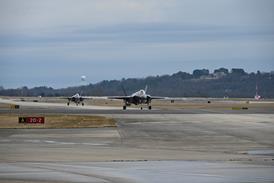Regional jet revolution could run out of steam as propeller-driven aircraft make comeback
US regional carriers are showing signs of renewed interest in the turboprop market, flying in the face of theories that have spurred most of them to rapidly convert to all-jet fleets in the past decade.
Turboprop manufacturers reported at last week's 2005 US Regional Airline Association annual convention in Cincinnati that while interest is rising in North America, sales remain stubbornly stagnant. This runs counter to trends in parts of Asia, Australia and Europe, where regional carriers are quietly driving a mini-boom in turboprop deals. But evidence is growing of a similar trend developing in the USA, where some airline executives are wondering if the regional jet revolution has gone too far.
"I think turboprops are going to make a bit of a comeback," says Fred Butrell, the new chief executive of Delta Connection carrier Comair, who inherits an airline that can be credited with ushering in the regional jet revolution in the mid-1990s.
The spike in jet fuel prices exposes a dramatic efficiency gap between 50-seat-class regional jets and equivalent turboprops. Butrell notes the difference can amount to a 30-40% increase in costs per flight between the two aircraft types on short-haul routes of 370-465km (200-250nm). Most regional jets also are moving into a post-honeymoon phase, when jets no longer covered under manufacturer warranties become a heavier burden on operational costs. So far, few US carriers have dropped plans to buy regional jets in favour of turboprops. A major exception is Horizon Airlines, the only US carrier to invest in the Q400. Horizon chief executive Jeff Pinneo notes that buying 70-seaters broke with regional carrier practice, but has worked out well for the airline. Bombardier notes Horizon is successfully gaining market share against Southwest Airlines on routes using the Q400.
Bombardier is carefully raising its effort to market the turboprop in North America, but is clearly seeking to avoid driving too many customers away from already plunging sales for the 50-seat CRJ200.
The 50-seat regional jet market is believed to have already peaked in Europe and is close to saturation in the USA. Projected sales are expected to continue to decline for the next five years, but predictions are not all bad. General Electric Aircraft Engines is confident the 50-seat jet market will continue to thrive through its 2024 market forecast period. A replacement for aircraft purchased in the mid-1990s may need to be developed and introduced by 2015, fueling speculation about interest in either a jet or a turboprop solution.
STEPHEN TRIMBLE/CINCINNATI
Source: Flight International























